Your front porch is more than just an entryway—it’s the handshake between your home and the world. As an interior designer specializing in American residential spaces, I’ve seen how a thoughtfully designed porch can dramatically boost curb appeal, increase property value, and create that all-important welcoming feeling before guests even step inside. With 2025’s design trends leaning toward personalized, functional outdoor living spaces, now is the perfect time to reimagine your front porch.
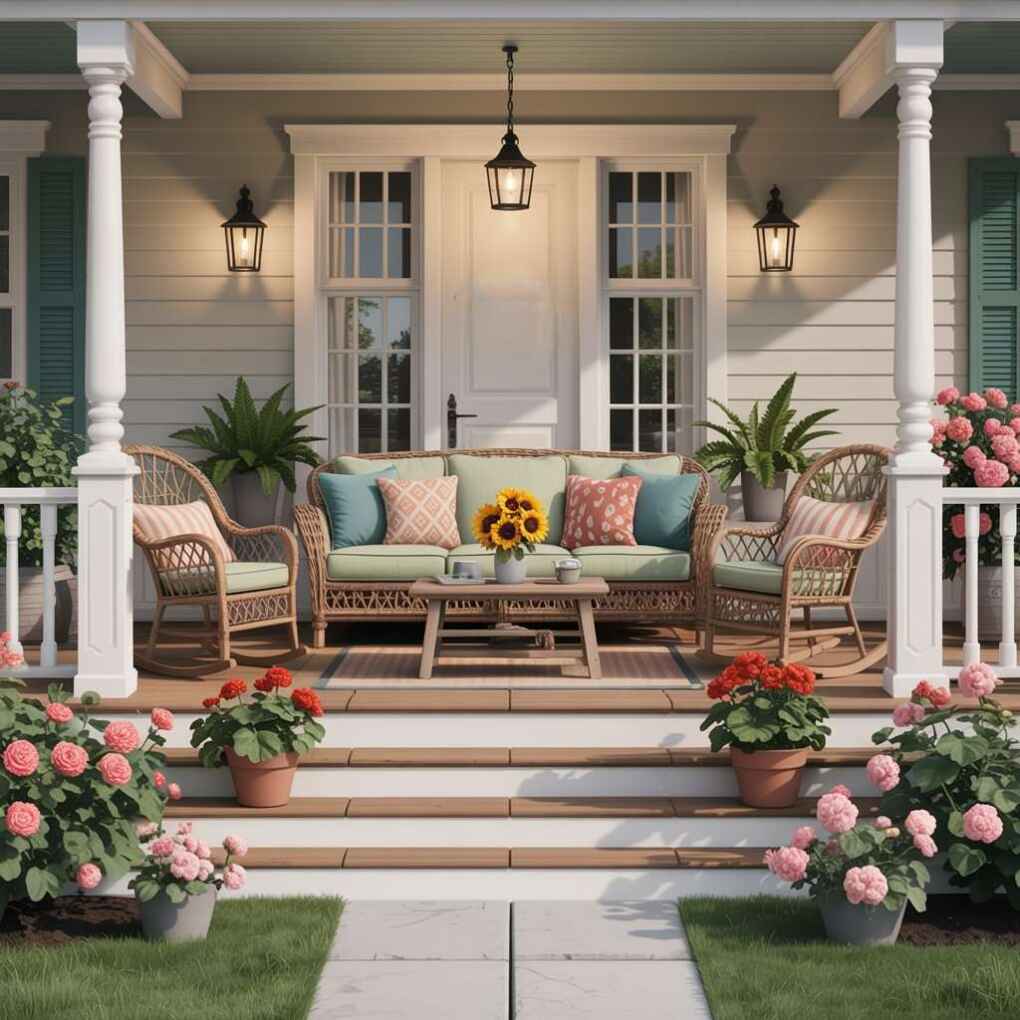
According to recent studies, 78% of homebuyers consider curb appeal a significant factor in their purchasing decision, making your porch one of the most valuable square feet of your property. Whether you’re working with a sprawling wraparound porch or a compact city stoop, these 16 decor ideas will help you create a space that’s both stylish and inviting while reflecting your personal taste. Let’s explore how to transform that often-underutilized transition space into the heart of your home’s exterior.
1. Classic Rocking Chair Elegance
Few porch elements exude timeless Americana quite like a pair of well-chosen rocking chairs. This staple of front porch design instantly communicates warmth and hospitality, inviting neighbors to pull up a seat and chat. The gentle motion of rocking creates a soothing atmosphere that transforms your porch from a mere passageway into a destination. When selecting chairs, consider both style and comfort—traditional wooden rockers offer vintage charm while modern interpretations in weather-resistant materials provide durability without sacrificing aesthetics.
Position your rockers near the entrance but not blocking the doorway, creating a natural gathering spot while maintaining flow. Pair them with a small side table for coffee cups or books, and consider adding coordinating cushions in weather-resistant fabric for extra comfort. As jcdesignbuild.com notes, “Your front porch is the first impression visitors get of your home, and in 2025, creating a warm, stylish, and inviting entrance is more important than ever.”
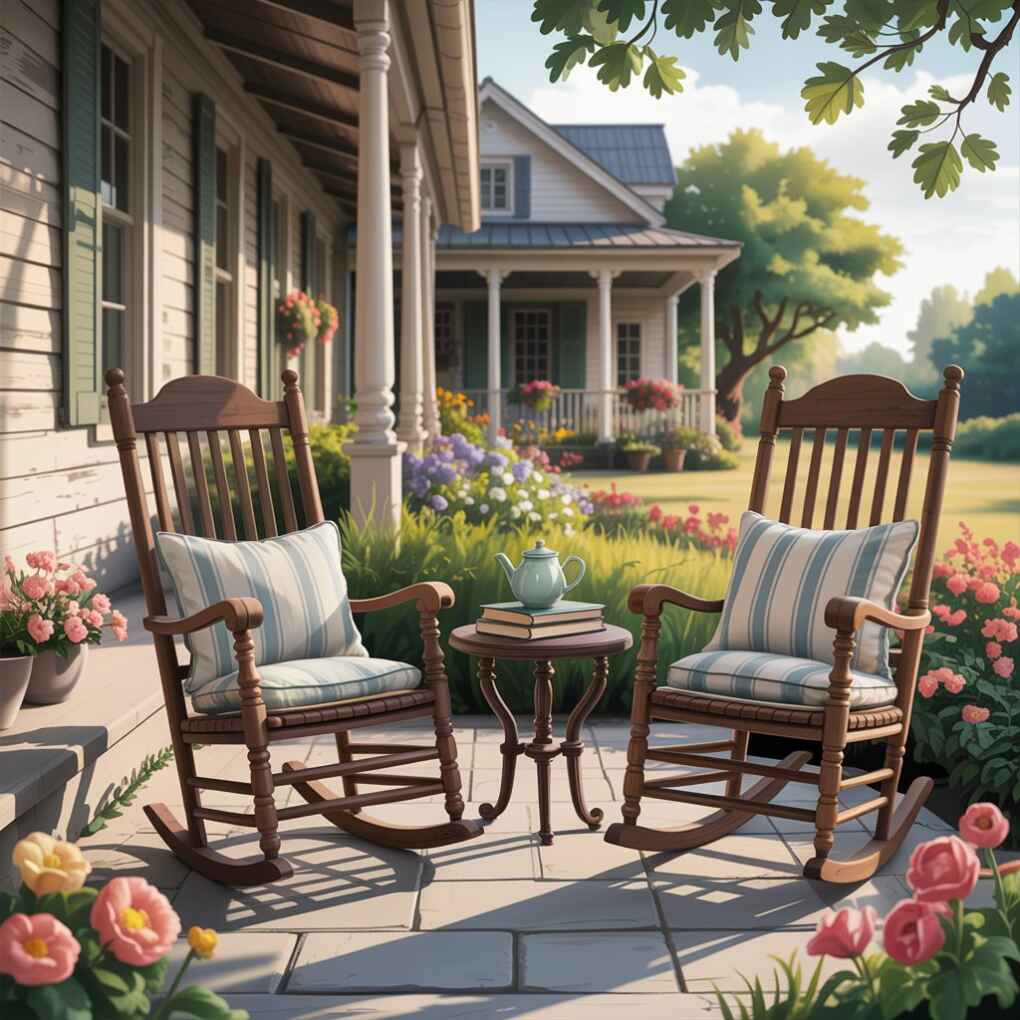
Pro Tip: Choose chairs with slightly curved backs for optimal comfort during longer conversations—this subtle ergonomic feature makes all the difference when you’re enjoying those lazy summer evenings.
2. Modern Porch Swing Appeal
Contemporary porch swings have evolved far beyond simple wooden planks, offering clean lines, comfortable seating, and striking design elements that serve as both functional seating and artistic statement pieces. Suspended from sturdy ceiling hooks or a dedicated swing frame, these updated versions often feature weather-resistant fabrics, adjustable chains, and ergonomic designs that cater to today’s lifestyle. Whether you opt for a classic wooden swing with modern finishing or a sleek metal frame with plush cushioning, this element instantly elevates your porch’s aesthetic while providing relaxing seating for two.
Swings work particularly well on porches with higher ceilings (minimum 8 feet clearance) and can become the focal point of your outdoor space. For smaller porches, consider a single-person swing chair that offers the same relaxing motion without overwhelming the area. Pair with coordinating floor pillows for additional seating flexibility, creating what decorilla.com describes as “the perfect hangout spot” that transforms otherwise underused space.
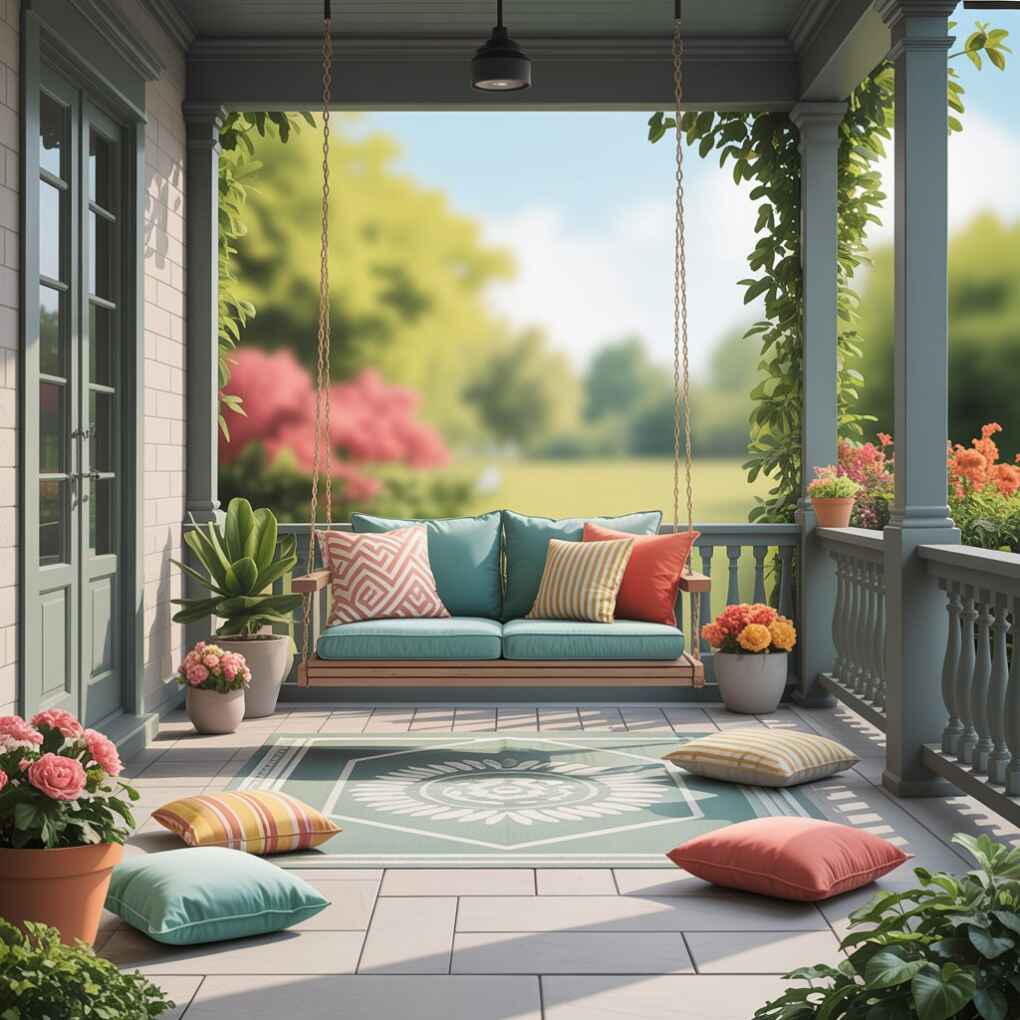
Pro Tip: Install your swing slightly off-center to create visual interest and ensure proper clearance for comfortable swinging without bumping into walls or railings.
3. Bold Color Accents That Pop
Moving beyond traditional white and neutral tones, 2025’s porch color trends embrace confident hues that make unforgettable first impressions. Deep navy blues, sage greens, terra cotta, and even unexpected shades like dusty rose or slate gray create instant character and set your home apart from the sea of beige. The trick lies in strategic application—whether painting your front door a striking color while keeping trim classic, adding colorful cushions to neutral furniture, or using vibrant planters to inject personality.
Color psychology plays a significant role in porch design; warm tones like reds and oranges convey energy and hospitality, while cooler blues and greens promote calm and relaxation. Consider your home’s architectural style and neighborhood context when selecting your palette—historic homes might benefit from historically accurate but intensified colors, while modern homes can handle more dramatic contrasts. As noted by front porch experts, “bold colors” are among the key elements that “will help you elevate your home’s curb appeal” jcdesignbuild.com.
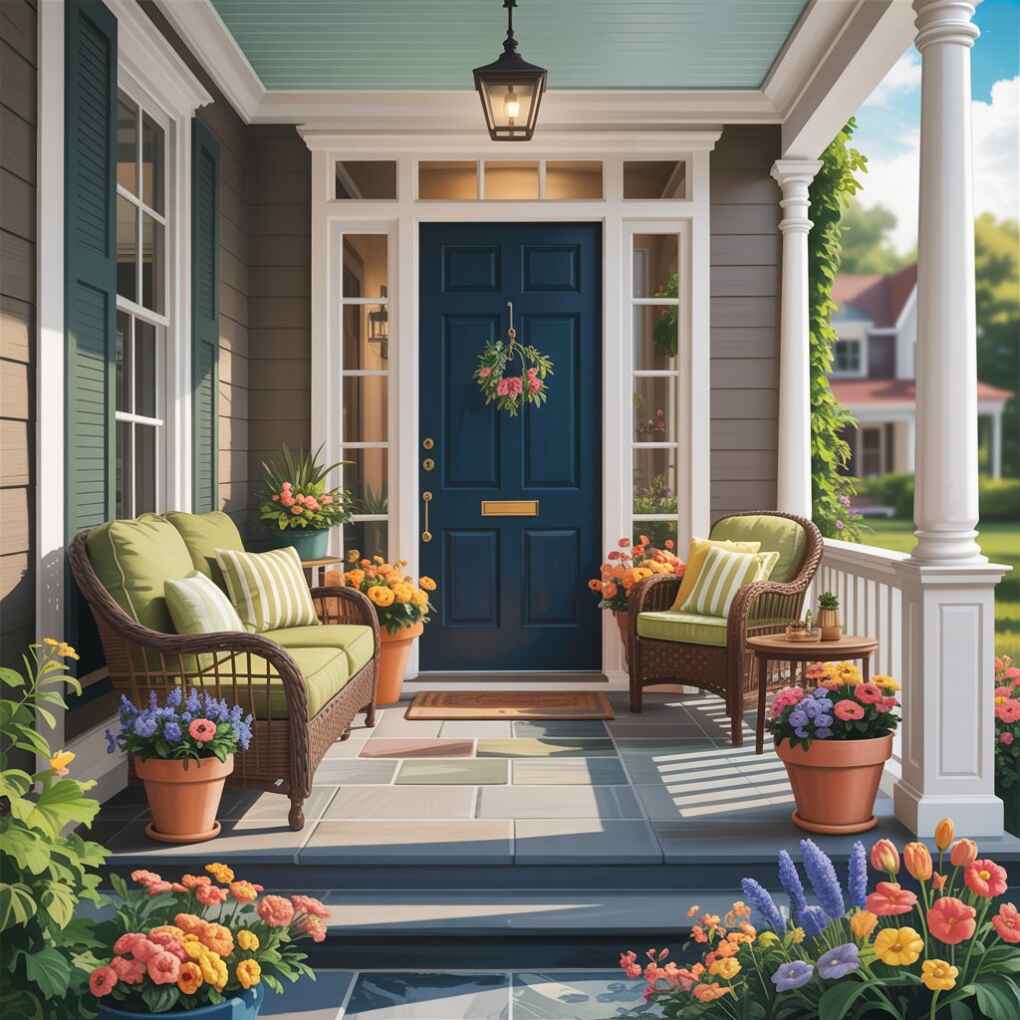
Pro Tip: Test your color choices at different times of day—what looks vibrant in morning light might appear dull by afternoon, so observe how your selections interact with your home’s specific lighting conditions.
4. Lush Greenery for Natural Warmth
Thoughtfully placed plants transform your porch from a static structure into a living, breathing extension of your home. Incorporating a mix of potted trees, hanging baskets, and railing planters creates visual interest at multiple levels while softening architectural lines. For year-round appeal, combine evergreen specimens like boxwood or ferns with seasonal annuals that provide color throughout the growing season. Climbing vines on trellises add vertical dimension and a sense of established roots that make your home appear settled and cared for.
Consider both practical and aesthetic factors when selecting plants—ensure they thrive in your porch’s light conditions (full sun, partial shade, or full shade) and require maintenance that fits your lifestyle. Potted citrus trees or herbs not only look beautiful but offer the added benefit of fragrance and potential harvest. The right plant selection, as highlighted by design experts, serves as one of those elements that will “enhance its charm and functionality” while “elevating your curb appeal” jcdesignbuild.com.
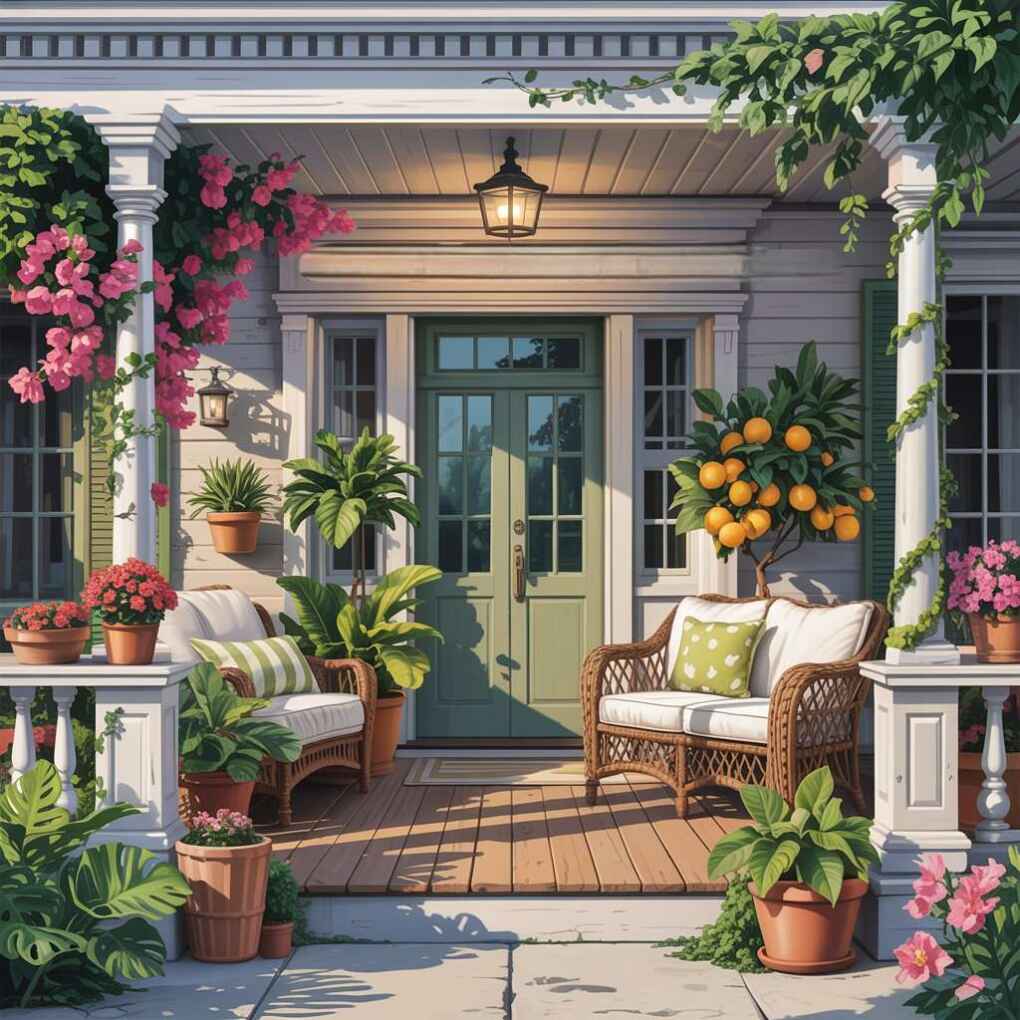
Pro Tip: Create a cohesive look by using matching or complementary pots, but vary heights and textures to prevent a monotonous “soldier row” effect that lacks visual interest.
5. Cozy Seating Arrangements for Connection
Move beyond the two-chair minimum and create conversation-friendly groupings that encourage lingering and connection. The key is arranging seating at angles rather than in strict parallel lines—this subtle adjustment makes conversations flow more naturally and creates a more intimate atmosphere. Incorporate versatile pieces like cushioned benches that provide ample seating while tucking neatly against walls, or modular outdoor sofas that can be reconfigured for different occasions.
When planning your layout, think about how you want to use the space—whether for relaxing, reading, or entertaining—as this should guide your porch design to create a “cozy and inviting flow” as noted by decorilla.com. Add side tables within easy reach for drinks and books, and consider including one slightly larger coffee table as an anchor piece that ties the arrangement together visually.
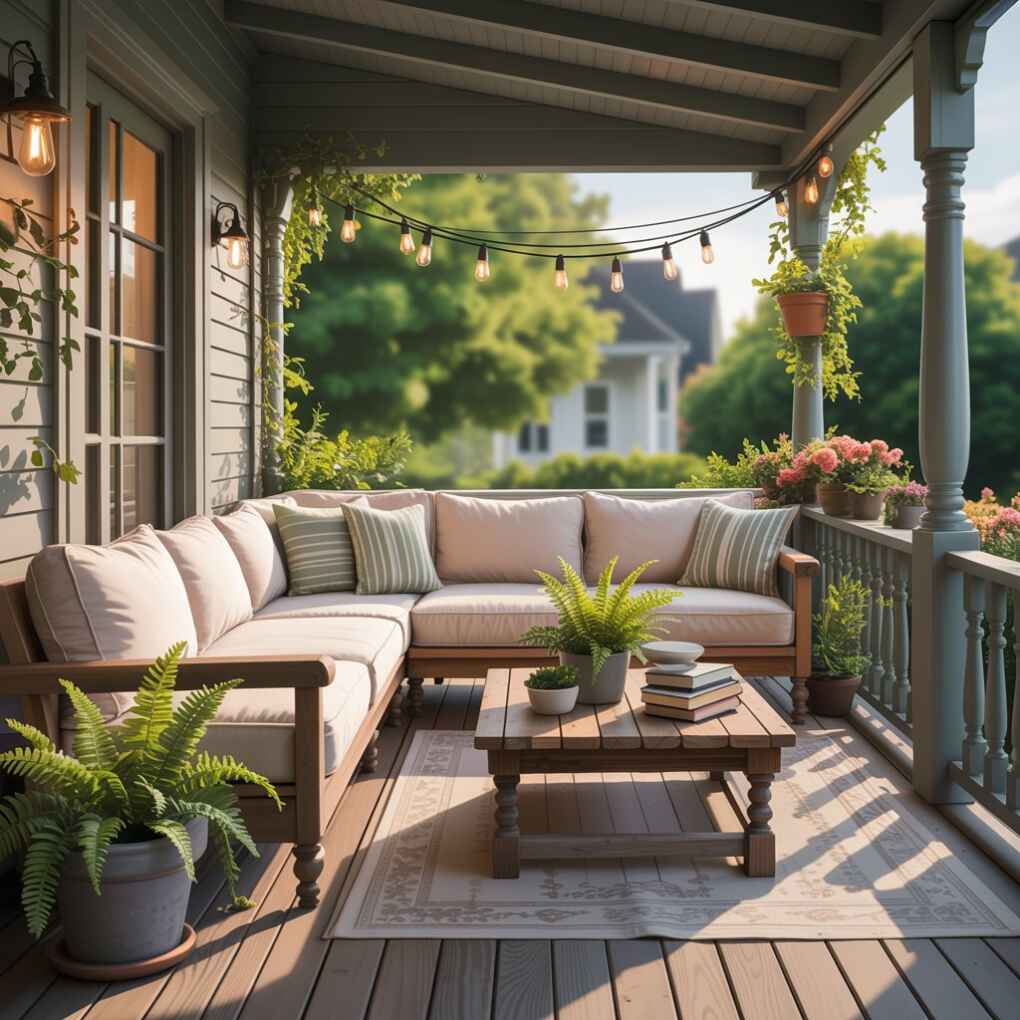
Pro Tip: Leave at least 18 inches of clearance between seating pieces and any walls or railings to ensure comfortable movement and prevent that cramped feeling that discourages use.
6. Vintage-Inspired Details with Modern Comfort
Vintage porch elements connect us to a simpler time when neighbors chatted across yard fences and families gathered to watch the world go by, as eloquently described by thepaintedhinge.com. Incorporate antique-inspired lanterns, classic wicker furniture with updated weather-resistant finishes, or reproduction spindlework that pays homage to historical architectural details. These elements bring warmth and personality that modern styles often lack, while maintaining contemporary comfort standards.
Don’t feel limited by your home’s actual age—vintage touches work for any home style, from farmhouse to colonial, creating a sense of established community and belonging. Search estate sales, architectural salvage yards, or specialty retailers for authentic pieces, or opt for high-quality reproductions that capture the essence without the maintenance headaches of true antiques.
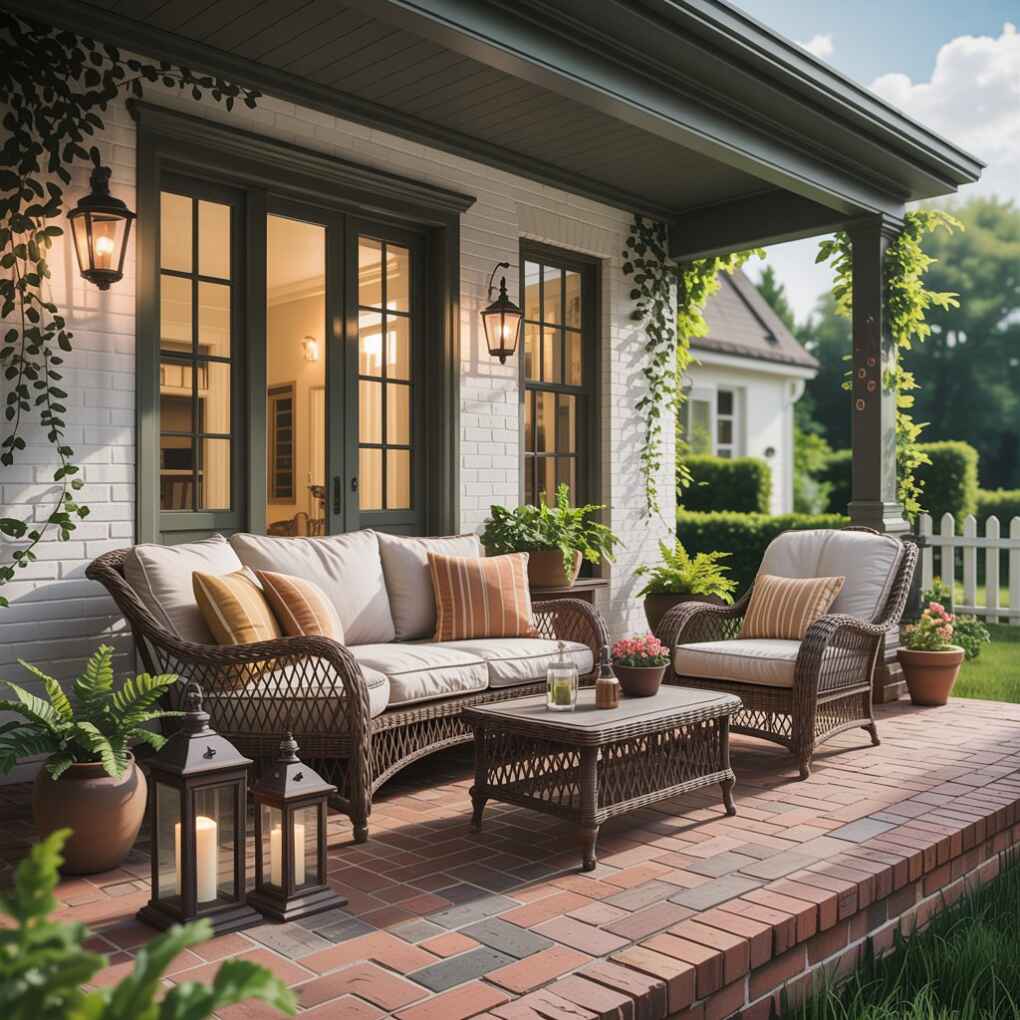
Pro Tip: Maintain balance by mixing vintage and modern elements—a single authentic piece surrounded by contemporary furnishings often has more impact than an all-vintage approach that can feel like a museum display.
7. Coastal Breezy Design for Waterfront or Not
You don’t need to live near the ocean to enjoy coastal porch vibes—modern design allows you to bring that breezy, relaxed aesthetic to any location. Weathered woods, soft blues and whites, nautical accents, and natural textures transform your porch into a statement piece regardless of your proximity to water, as thepaintedhinge.com enthusiastically confirms. Think rope details on furniture, striped cushions, driftwood accents, and light, airy fabrics that move gently with the breeze.
For authentic coastal charm without cliché, focus on texture rather than obvious nautical motifs—jute rugs, woven baskets, linen pillows, and bleached wood create subtle sophistication. Keep your color palette light and airy with whites, sands, soft blues, and sea greens, punctuated by natural wood tones that add warmth without heaviness.
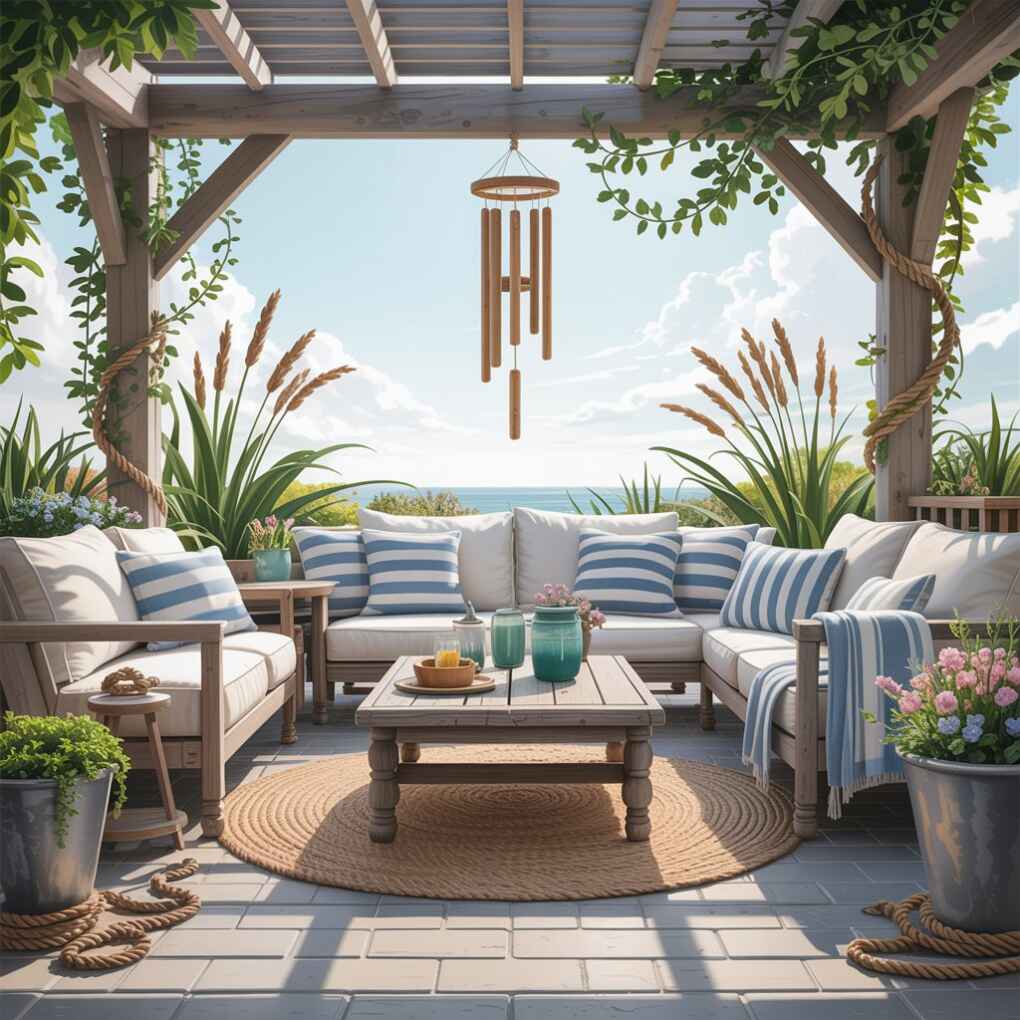
Pro Tip: Incorporate multiple sources of moving texture—wind chimes, lightweight curtains, and plants that sway in the breeze—to enhance that authentic coastal feeling of being connected to natural elements.
8. Weathered Wood Furniture Elegance
Authentic weathered wood tells a story and adds instant character to any porch design. Reclaimed lumber from barns or historic buildings creates unique furniture pieces with built-in history, while intentionally distressed new wood offers similar appeal with greater durability. Dining sets, rocking chairs, or even a simple bench crafted from weathered wood becomes an instant focal point that speaks of tradition and craftsmanship.
When incorporating weathered wood, balance is key—too much can feel cluttered or dilapidated rather than charming. Use it for one or two statement pieces paired with cleaner-lined elements to prevent your porch from appearing disheveled. As noted by coastal design enthusiasts, “weathered woods” are among the essential elements that help “your porch become more than just an entryway” thepaintedhinge.com.
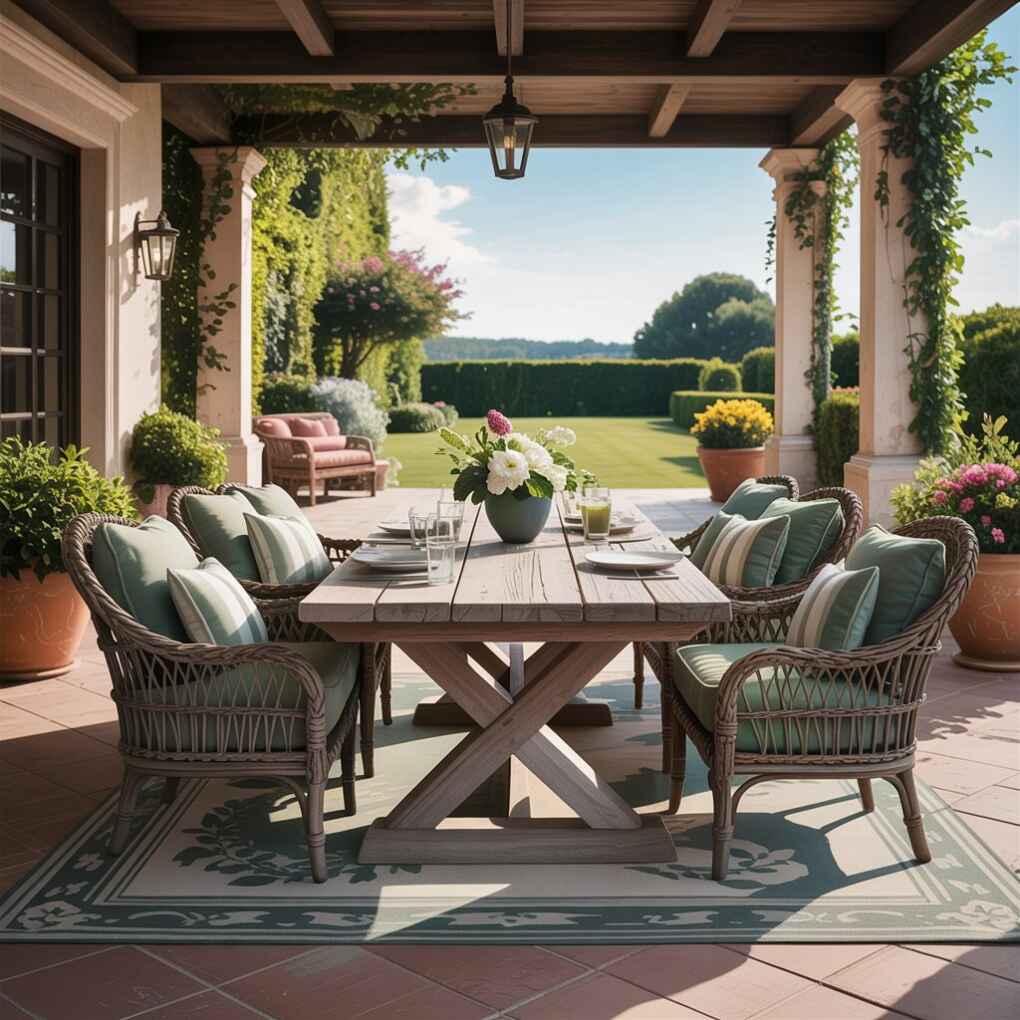
Pro Tip: Protect your investment by applying a clear, UV-resistant sealant to weathered wood furniture—this preserves the aged appearance while preventing further deterioration from sun and moisture.
9. Strategic Porch Lighting Design
Lighting transforms your porch from daytime accent to nighttime statement, extending usability and enhancing safety. Layer your lighting with ambient overhead fixtures, task lighting for reading nooks, and accent lighting to highlight architectural features or plants. Vintage-inspired lanterns flanking your front door create symmetry and welcome, while adjustable track lighting or recessed cans provide flexible illumination for different activities.
Solar-powered path lights along porch steps add both function and charm, while string lights overhead create that magical “outdoor room” atmosphere perfect for evening entertaining. Remember to select bulbs with the right color temperature—2700K to 3000K provides that warm, inviting glow Americans associate with comfort and hospitality.
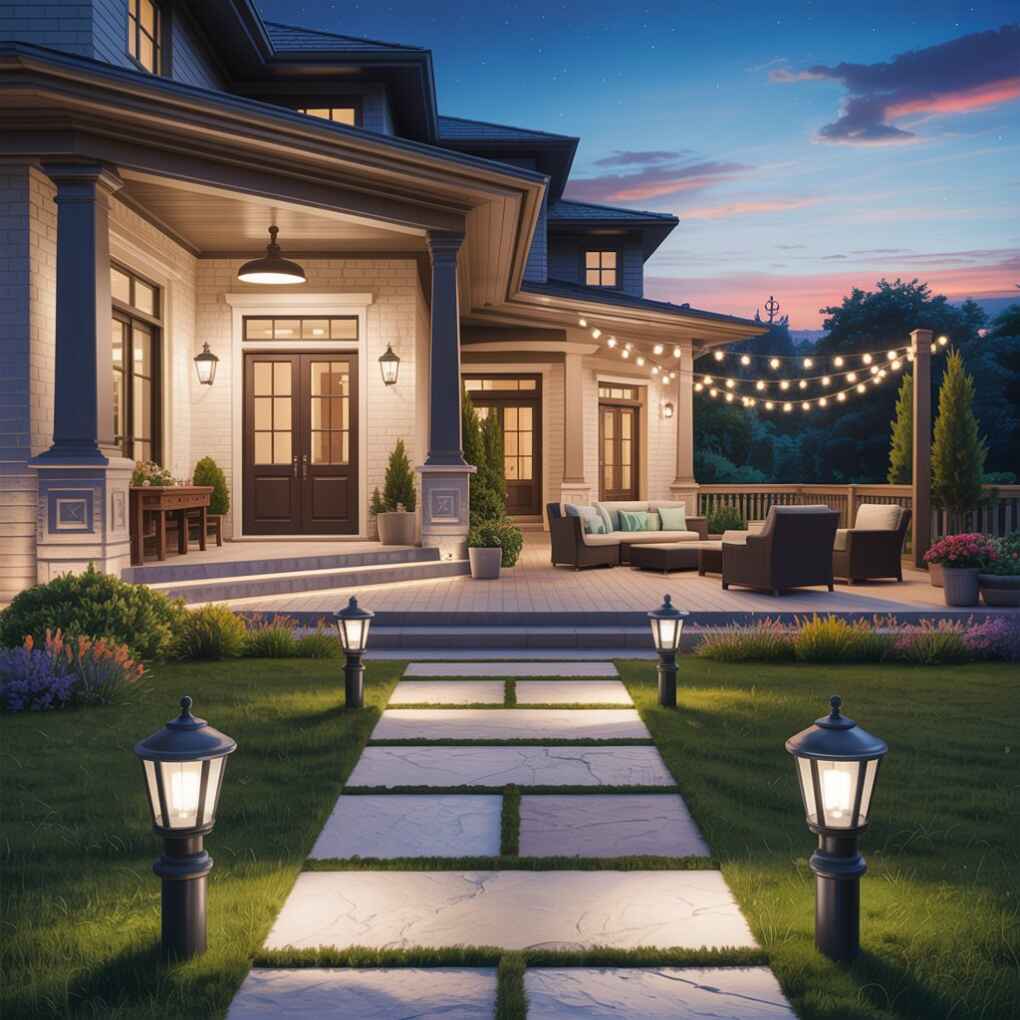
Pro Tip: Install lighting on dimmer switches or smart systems that allow you to adjust brightness for different occasions—from bright task lighting during the day to romantic ambiance in the evening.
10. Nautical Accents for Subtle Sophistication
Move beyond obvious anchors and ship wheels to incorporate nautical elements with refined subtlety. Rope details on chair arms, striped awnings in navy and white, or a simple pulley system for hanging plants all nod to maritime tradition without veering into theme-park territory. Naval charts framed under glass for outdoor use, vintage brass binoculars as decor, or even a classic ship’s bell near your entrance add character without overwhelming your porch’s overall aesthetic.
Quality trumps quantity when incorporating nautical elements—the goal is a whisper of the sea, not a shout. As thepaintedhinge.com suggests, nautical touches are part of what makes a porch “more than just an entryway.”
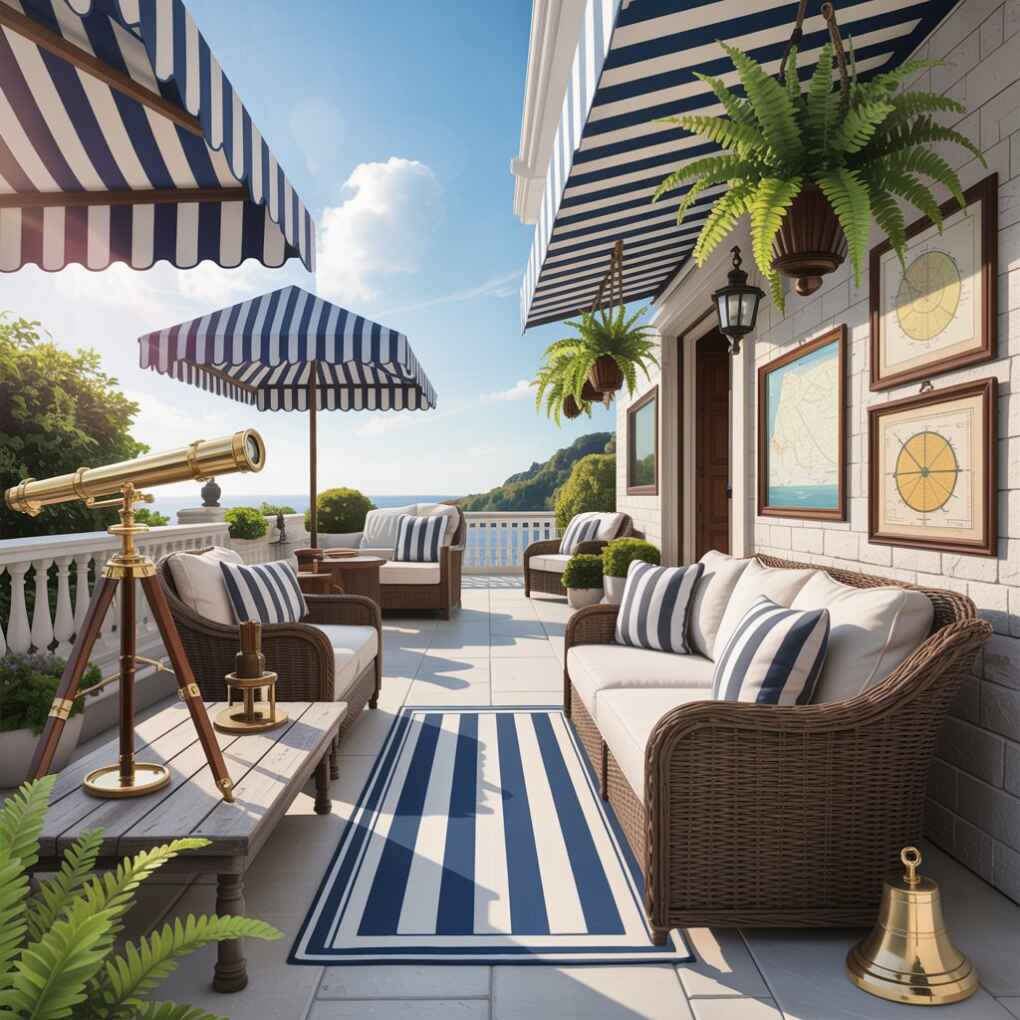
Pro Tip: Visit marine supply stores for authentic, high-quality nautical hardware that serves both functional and decorative purposes—they often carry beautiful rope, cleats, and other elements you won’t find in standard home stores.
11. Soft Color Palettes for Serene Entryways
For those who prefer understated elegance over bold statements, a carefully curated soft color palette creates instant sophistication. Think ivory, misty blue, pale sage, and warm greys that blend seamlessly with natural wood tones and greenery. These subtle hues work particularly well for historic homes where you want to honor architectural integrity while adding contemporary freshness.
The magic of soft colors lies in their ability to make small spaces appear larger and create a calming transition between the outside world and your home’s interior. Layer varying tones within the same color family for visual interest without overwhelming the senses—a light grey floor, medium grey seating, and charcoal accents create dimension while maintaining harmony.
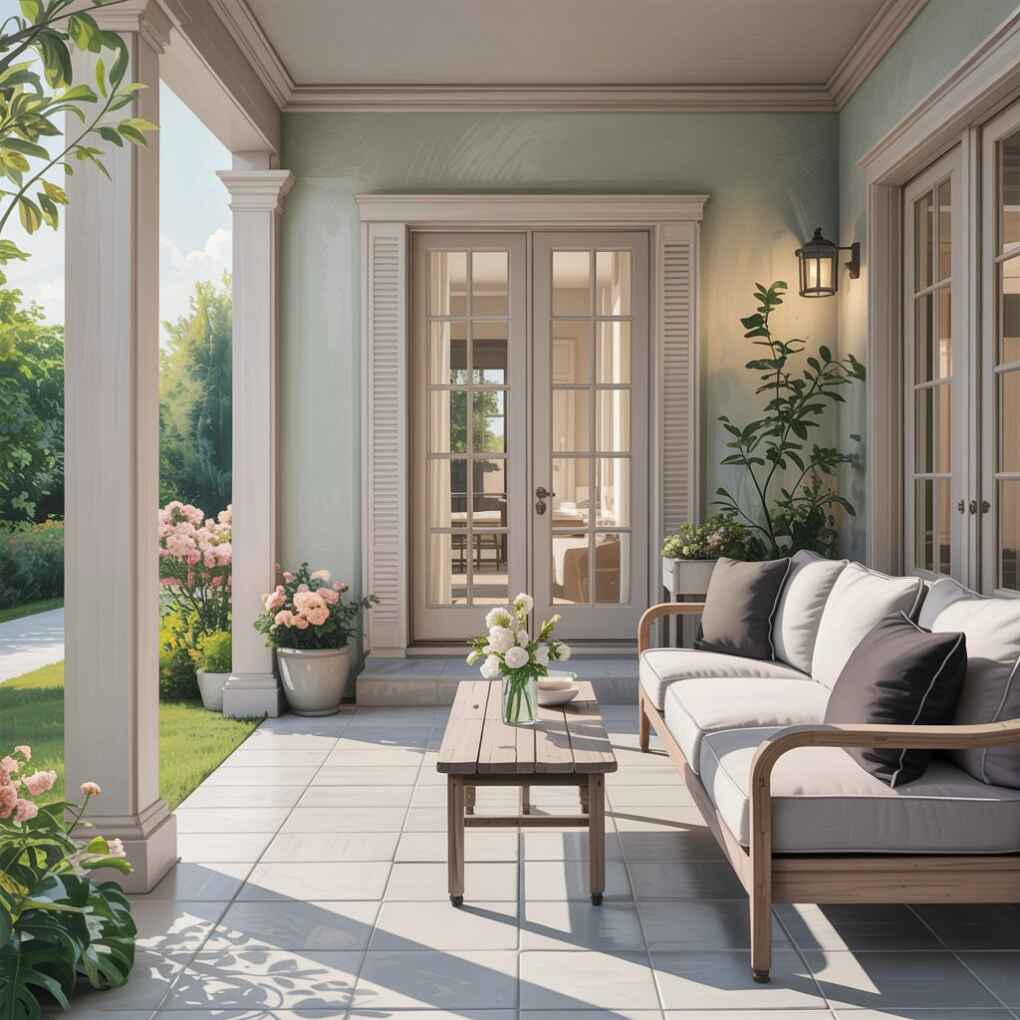
Pro Tip: Add punctuation to soft palettes with metallic accents in brushed brass or antique silver—these provide just enough contrast to prevent your porch from fading into the background.
12. 1920s Remodel Elements with Modern Functionality
The 1920s were full of character, with unique architectural features that made porches gathering places where people “would sit, chat, and watch the world go by,” according to porchremodeler.com. Recreate this warm, welcoming space by preserving original details like spindlework, built-in seating, or decorative railings while adding modern conveniences like recessed lighting or hidden storage. The result is a porch that feels authentically historic yet perfectly suited to contemporary living.
Key elements to incorporate include geometric patterns in flooring or trim, black metal fixtures with subtle Art Deco influences, and multi-level seating arrangements that encourage social interaction. Even if your home isn’t from this era, these design elements add instant charm and depth to any porch.
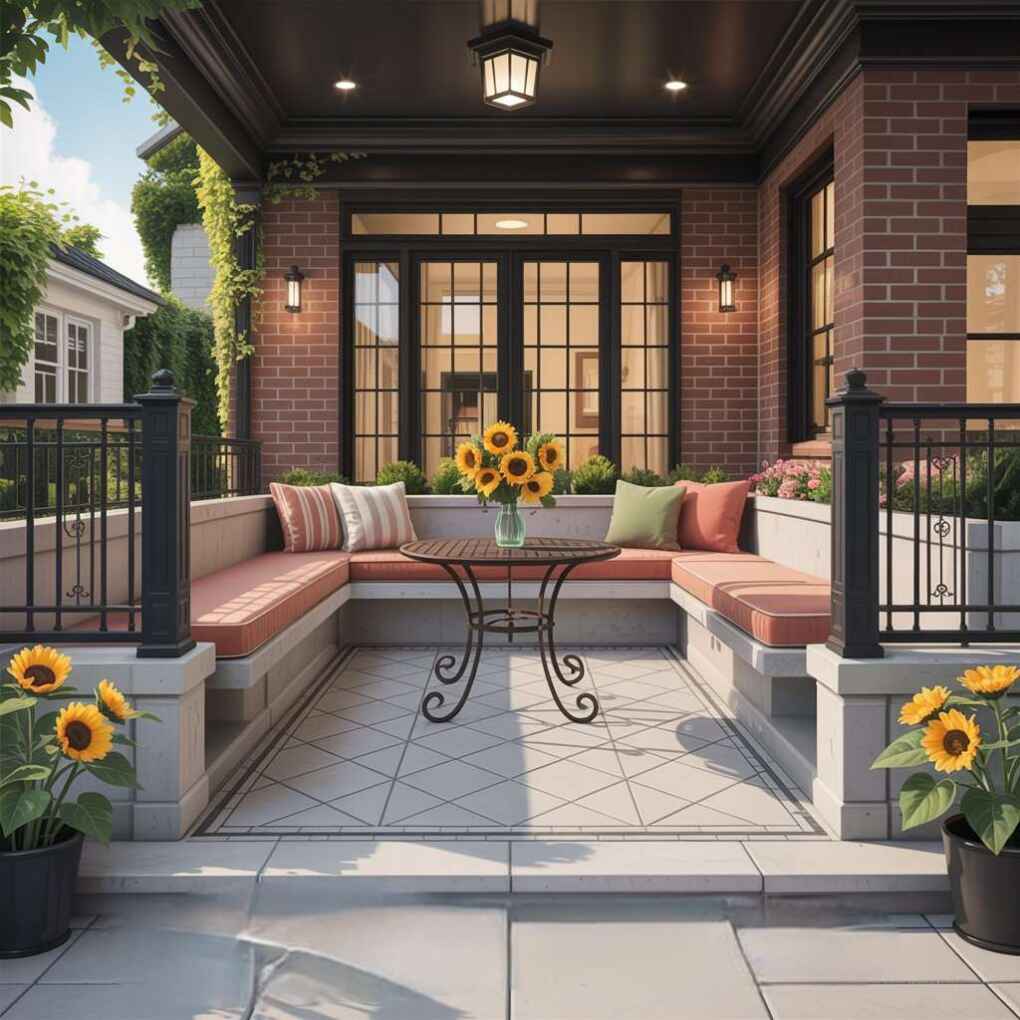
Pro Tip: Research your local historical society’s records to find original photographs of homes from similar periods in your area—this can provide authentic inspiration specific to your region’s architectural heritage.
13. Functional Outdoor Rugs and Textiles
Outdoor rugs do far more than add color and pattern—they define seating areas, provide comfortable footing, and add a layer of interior-style sophistication to exterior spaces. Choose polypropylene or other synthetic materials that resist fading, mold, and mildew while offering the look and texture of natural fibers. When selecting patterns, consider your porch’s size; smaller spaces benefit from simple geometric designs while larger porches can handle more complex patterns.
Textiles extend beyond rugs to include cushions, pillows, and even outdoor curtains that add softness and personality. Mix and match patterns within the same color family for visual interest while maintaining cohesion. As textile expert design principles remind us, these elements transform “a few chairs [that] gather dust” into inviting spaces you’ll actually use decorilla.com.
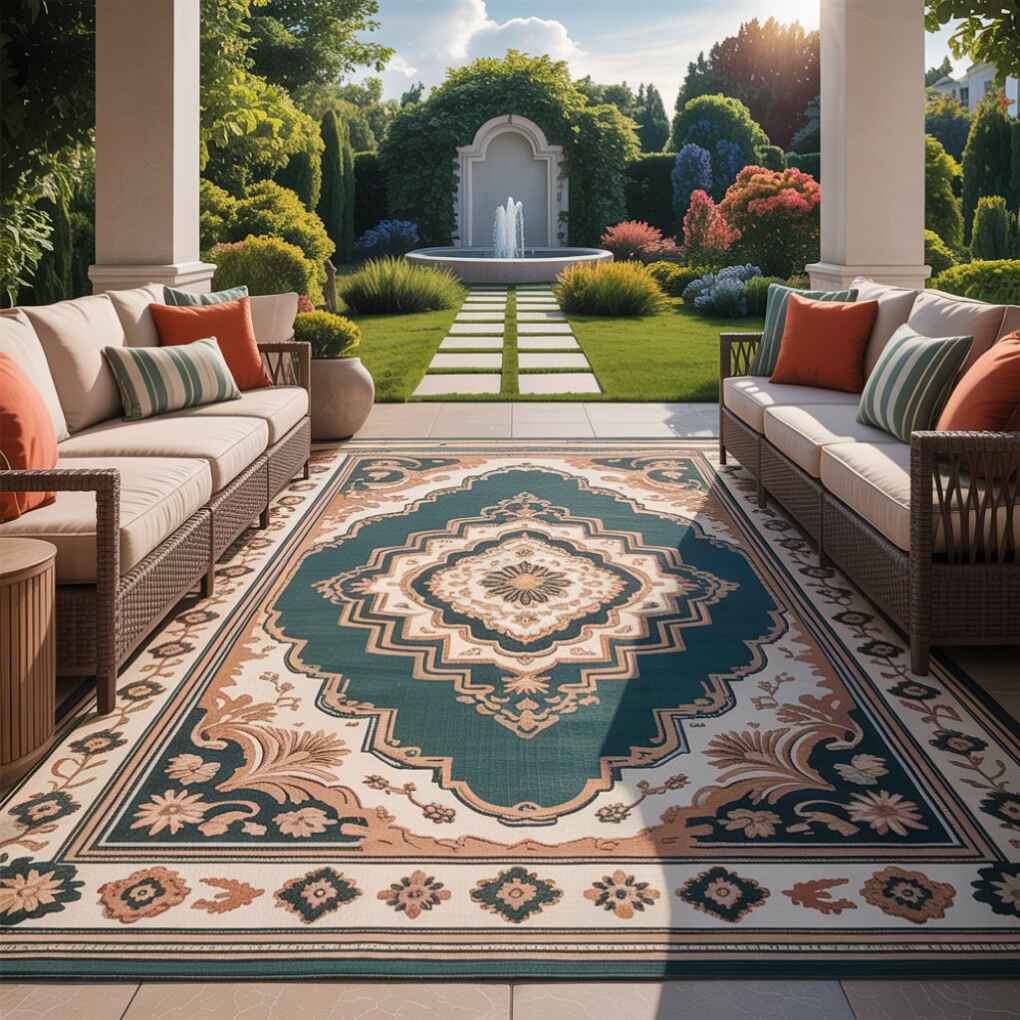
Pro Tip: Rotate and flip outdoor cushions regularly to ensure even sun exposure and prevent one side from fading faster than the other—a simple habit that significantly extends their lifespan.
14. Preserving Original Architectural Details
Many porch problems stem from covering up or removing original architectural elements rather than celebrating them. Exposed beams, decorative brackets, intricate railings, and built-in benches are features to highlight, not hide. Clean and restore these elements rather than painting over them—when appropriate, use historically accurate colors and finishes that honor your home’s era while meeting modern durability standards.
For homes lacking distinctive architectural features, consider adding elements like corbels, trim details, or lattice panels that complement your home’s style. These additions create visual interest and give your porch more personality, addressing that common problem where “it feels impossible to create a welcoming space that stands out from the neighbors” thepaintedhinge.com.
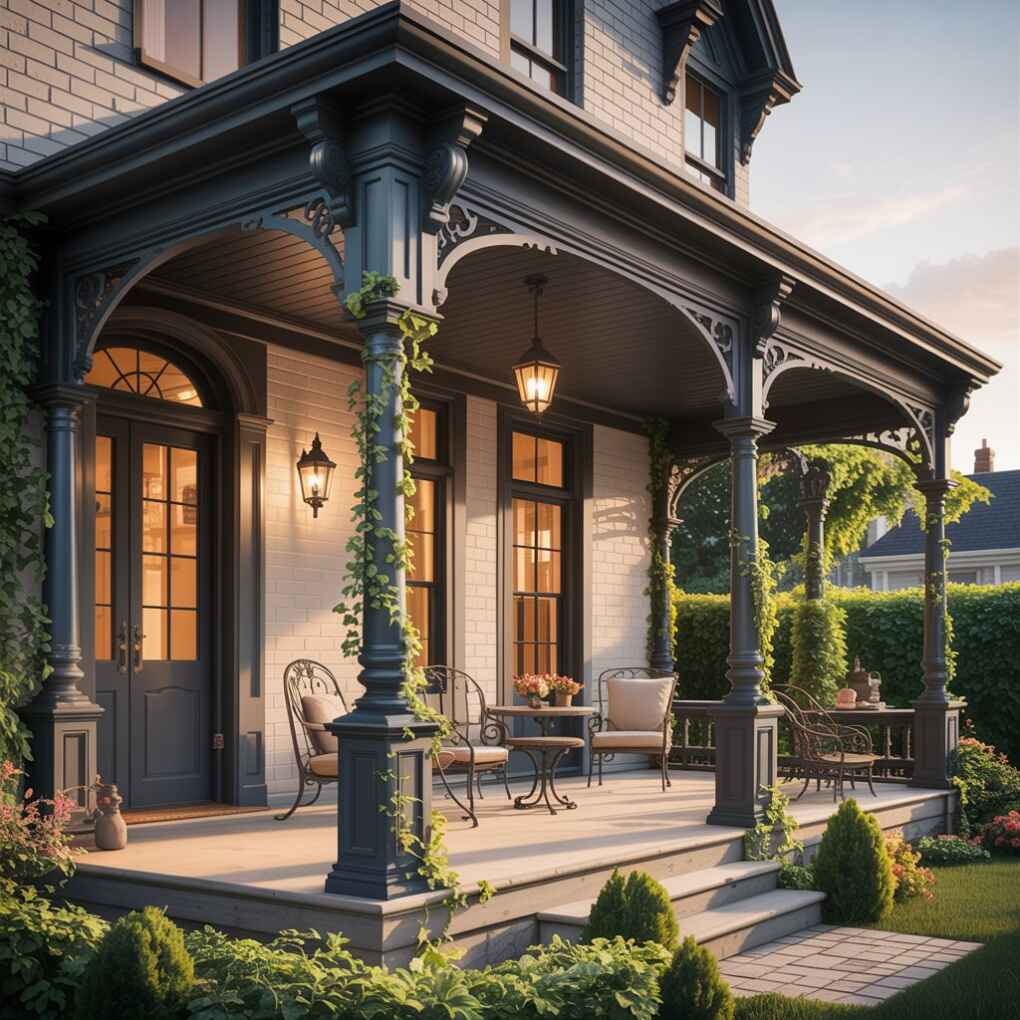
Pro Tip: Consult your local historical society or preservation organization for guidance on appropriate restoration techniques and historically accurate color palettes specific to your region and home style.
15. Personalized Entryway Accents
Your front porch should be as uniquely you as the inside of your home—don’t be afraid to showcase personality through carefully curated details. A custom house number crafted from meaningful materials, a unique doormat that reflects your sense of humor, or even a small collection of meaningful objects displayed on a wall shelf all create instant connection with visitors.
Consider how you want people to feel when approaching your home and choose accents that communicate that message—serene, joyful, sophisticated, or playful. As design expert Sean Sandona reminds us, exploring “new and creative front porch ideas can significantly elevate your curb appeal” jcdesignbuild.com, with personal touches being among the most impactful.
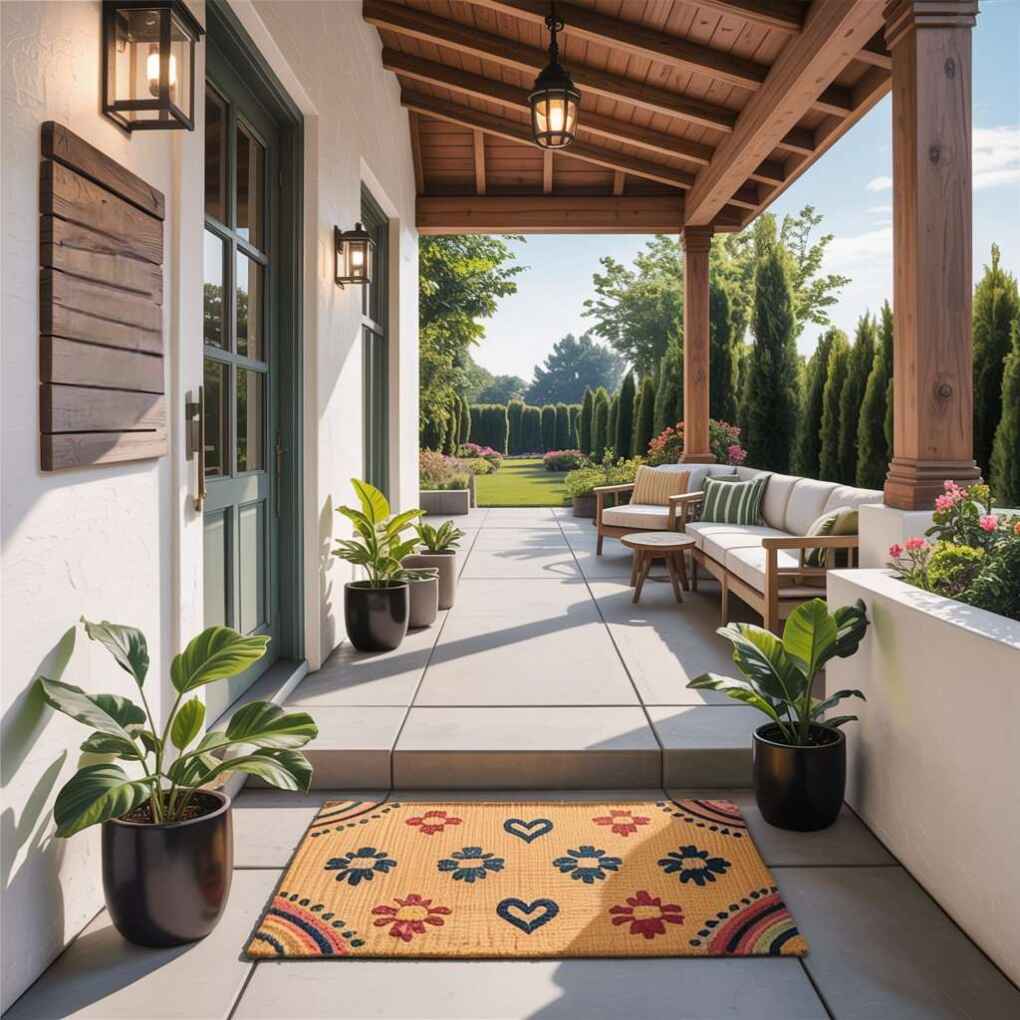
Pro Tip: Limit personalized elements to three focal points to prevent visual overwhelm—your door, one seating area feature, and one vertical element (like wall decor or hanging plants).
16. Multi-Functional Layout Planning
The most successful porches serve multiple purposes without feeling cluttered—creating zones for different activities within one coherent space. Designate areas for greeting guests (near the door), relaxing (slightly set back), and perhaps even dining or working (if space allows). The key is using furniture arrangement, rug placement, and subtle level changes to define these areas without physical barriers that make the space feel segmented.
According to professional designers, this approach addresses the common problem where “most front porches sit underused, a forgotten space between the street and the interior” decorilla.com. By intentionally designing for how you’ll actually use the space, you transform it from a passageway into a destination. Consider storage solutions that keep the space clutter-free while maintaining accessibility to items you’ll need regularly.
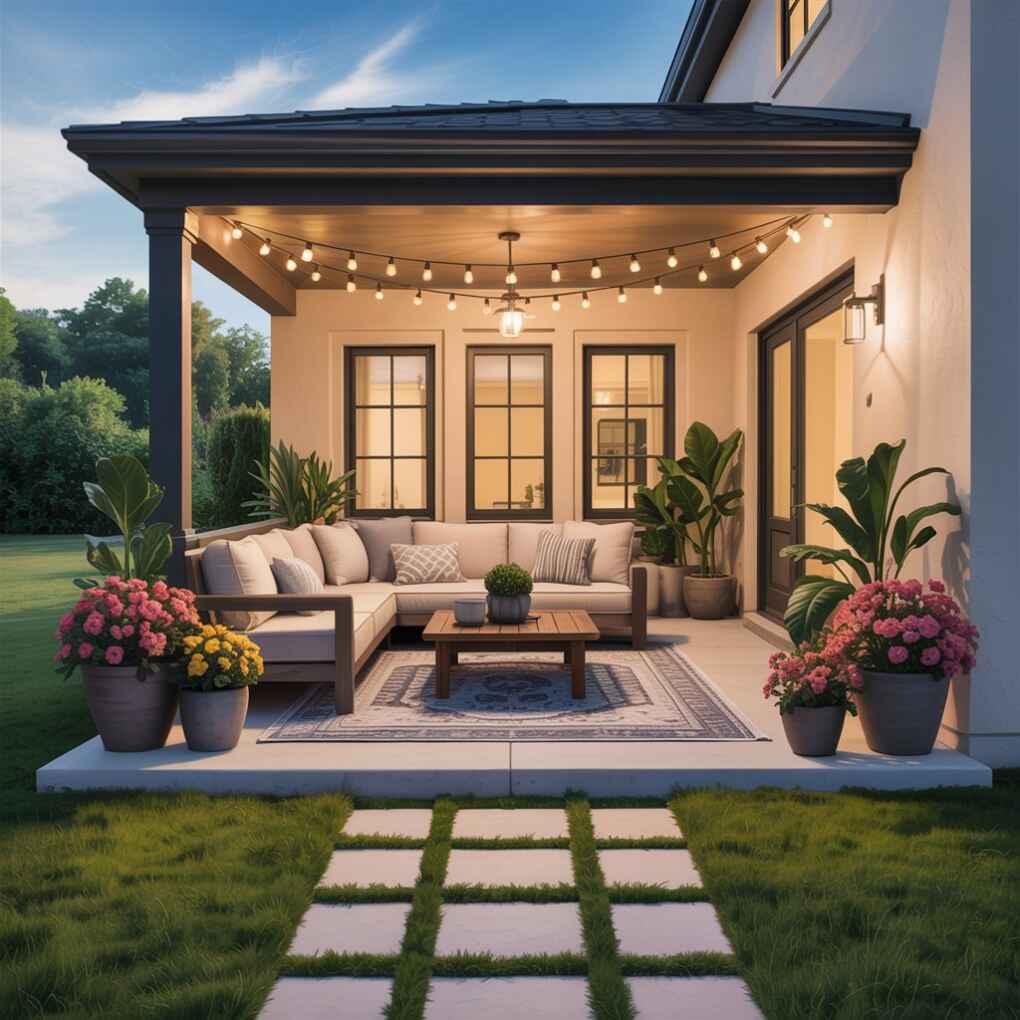
Pro Tip: Create an “activity calendar” for your porch before designing—it should feel equally comfortable for a 7 AM coffee moment, an afternoon reading session, and an evening cocktail gathering with friends.
Your front porch represents the handshake between your home and the world—an opportunity to make that crucial first impression while creating valuable living space. By implementing even a few of these 16 ideas, you’ll transform what’s often an afterthought into a welcoming extension of your home that enhances both functionality and curb appeal. Remember, the most successful porch designs balance aesthetics with practicality, personal expression with neighborhood context, and tradition with innovation. Now that you’re armed with these professional insights, it’s time to step outside and reimagine what’s possible with your own front porch!
